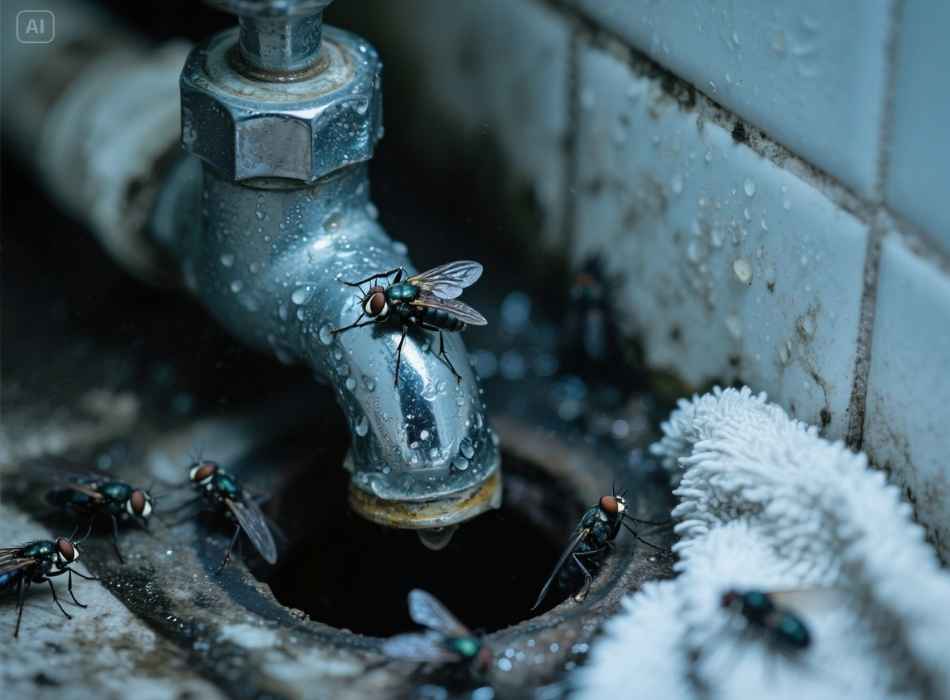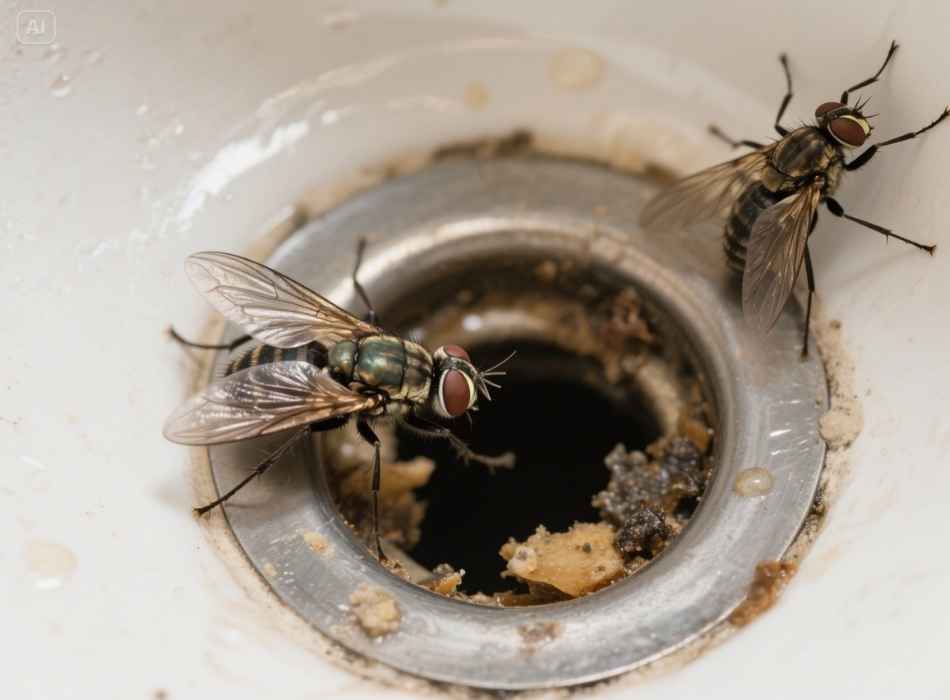Flies buzzing around your home can be frustrating and unhygienic. If you’re noticing an unusual number of them lately, you’re not alone. Flies are pesky, and the reasons behind their invasion might not be as apparent as you’d think. Identifying the root causes and taking actionable steps can help you reclaim your space.
This guide will explain the possible reasons why flies are swarming your home, the common types of flies you might encounter, and practical ways to get rid of them permanently.
Common Reasons Flies Are Invading Your Home
The presence of flies signals certain conditions that make your house an attractive spot for them. Here’s why you might be seeing so many:
1. Easy Access
Flies don’t need much of an invitation to enter your home. Open doors, windows without screens, or even small gaps in weather stripping provide them with easy entry points. Once inside, they’re quick to explore the space.
2. Food Sources
Flies are naturally drawn to food. Leftover scraps, uncovered fruit, crumbs on counters, and unsealed garbage bins are open invitations for these pests. Even the smallest amount of food can attract them.

3. Moisture
Many types of flies, like drain flies and fruit flies, thrive in damp environments. Leaking faucets, wet cleaning rags, or places such as clogged drains can become breeding grounds.
4. Decaying Organic Matter
Flies love decaying organic material. Trash bins, pet waste, compost piles, or even a forgotten food item under the couch can bring them swarming.
5. Warm Temperatures and Seasonal Changes
Warm weather increases fly activity. During spring and summer, higher temperatures speed up their breeding cycles, resulting in more flies appearing seemingly out of nowhere.
6. Undetected Breeding Grounds
Flies can breed in areas you might not immediately think of, like drains, planter soil, or even hidden spills under large appliances. If flies are multiplying indoors, they’ve likely found a safe place to lay eggs. It’s essential to identify and eliminate these breeding grounds to prevent future infestations.

7. Disease Carriers
Flies are known carriers of various diseases and can contaminate food and surfaces with harmful bacteria. This is why it’s crucial to get rid of flies as soon as possible, especially if they’re present in areas where food is prepared or consumed.
8. Natural Pest Control Methods
There are plenty of natural methods for deterring and eliminating flies without resorting to harsh chemicals. These include using essential oils like peppermint or lavender, creating traps with apple cider vinegar, and keeping your home clean and clutter-free.
- Expert Help
If you find that flies are still a persistent problem in your home, it may be time to seek the help of a professional pest control company. They have the specialized knowledge and tools to effectively eliminate fly infestations and prevent them from returning.
10. Preventing Future Fly Infestations
Once you’ve successfully gotten rid of flies in your home, it’s essential to take steps to prevent future infestations. This includes regularly cleaning and decluttering your living space, sealing any potential entry points for flies, and properly storing food items. By keeping a clean and well-maintained home, you can significantly reduce the chances of another fly invasion.
Types of Flies You Might Encounter
Knowing which type of household fly you’re dealing with can help you target them more effectively. Here are the most common culprits:
1. House Flies
The most recognizable type, house flies, are typically attracted to food, garbage, and animal waste. They reproduce quickly, which is why they often appear in large numbers.
2. Fruit Flies
These tiny flies are often found near overripe or fermenting fruits, vegetables, and sugary spills. They reproduce rapidly, making them difficult to get rid of once their population grows.

3. Drain Flies
These flies favor damp areas, particularly inside drains that have accumulated organic material. If you see them in your bathroom or near sinks, check the plumbing.
4. Fungus Gnats
Often mistaken for fruit flies, these are smaller and commonly found in houseplants with moist soil. Overwatering your plants could invite them to thrive.
5. Blow Flies
Blow flies are larger and metallic-looking. They are attracted to decaying meat or animal carcasses, which could indicate something more serious, like a hidden rodent or expired meat in your kitchen. These flies can lay hundreds of eggs, so it’s essential to address the source immediately.
6. Cluster Flies
Similar in appearance to blow flies, cluster flies are attracted to warm and sunny areas, often congregating on windows or walls. They typically enter homes in large numbers during fall as they seek shelter for the winter. While they may be a nuisance, they do not pose any health risks.
How to Get Rid of Flies in Your Home
Once you’ve identified the source of the infestation, follow these practical tips to eliminate flies and prevent them from returning.
1. Remove Their Food Sources
- Keep food covered, and don’t leave leftovers on countertops.
- Store fruits and vegetables in the fridge or airtight containers.
- Clean crumbs and spills immediately, especially sugary items like juice or soda.
2. Secure Your Trash
- Use a trash can with a tightly sealed lid.
- Take out garbage regularly, especially in hot weather.
- Clean the inside and outside of trash bins periodically, as residue can attract flies.
3. Fix Water and Drain Issues
- Unclog and clean drains with a mixture of boiling water and baking soda to remove organic buildup.
- Fix leaking faucets or pipes to eliminate dampness.
- Avoid leaving wet dishcloths, sponges, or mops lying around, as these provide moisture for flies.
4. Maintain Good Plant Care
If you have houseplants, avoid overwatering. Allow the soil to dry out between waterings to discourage fungus gnats from breeding.
5. Use Fly Screens and Barriers
- Install fly screens on doors and windows to prevent them from entering.
- Seal gaps around windows, doors, and vents with weatherstripping.
- Use mesh covers over food and beverages during meals to keep flies at bay.
6. Use Natural Deterrents
If you prefer eco-friendly methods to deal with flies:
- Place basil, mint, or lavender plants around your home; flies dislike their strong scents.
- Create a homemade fly trap using apple cider vinegar and a drop of dish soap in a jar. Cover the jar with plastic wrap, poke a few holes in it, and watch the flies get trapped.
7. Consider Chemical or Professional Options
- Use fly sprays or insect zappers as a last resort for immediate relief.
- If the infestation persists or blowflies are indicating a carcass, consult a pest control professional. They can determine the source of the infestation and provide effective solutions.
- Consider using natural pest control methods first before resorting to chemical options, as some chemicals can be harmful to both humans and pets.
- If using a professional service, make sure they are licensed and use environmentally-friendly products. You may also want to research their reputation and read reviews from previous customers.
- Regularly cleaning and maintaining your home can prevent fly infestations in the future.
Preventing Future Infestations
Once you’ve eradicated the flies, taking preventive measures will keep them from coming back:
- Clean periodically and thoroughly; deep clean hard-to-reach areas at least once a month.
- Check doors and windows for gaps regularly and repair them.
- Compost food scraps properly and store compost bins far from entrances.
- Maintain a consistent cleaning routine for drains, trash bins, and pet areas.
Reclaim Your Space from Flies
Living with flies doesn’t have to be your reality. By pinpointing the root cause and taking these simple but effective steps, you can rid your home of these buzzing intruders for good. Whether it’s adjusting cleaning habits, sealing entry points, or implementing natural deterrents, consistency is key.
Tired of the hassle? Consider creating a regular house cleaning checklist to keep everything in order, or consult a pest control professional for long-term solutions. With the right effort, you’ll be enjoying a clean, fly-free home in no time.











